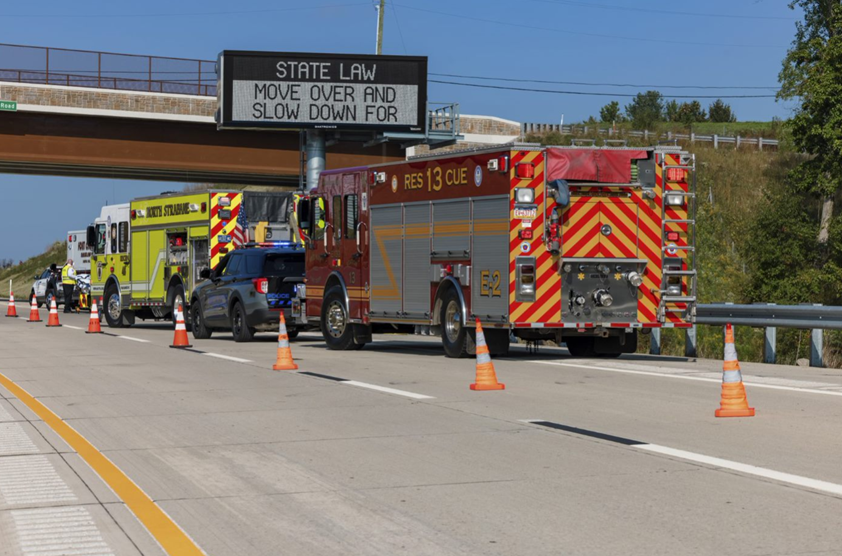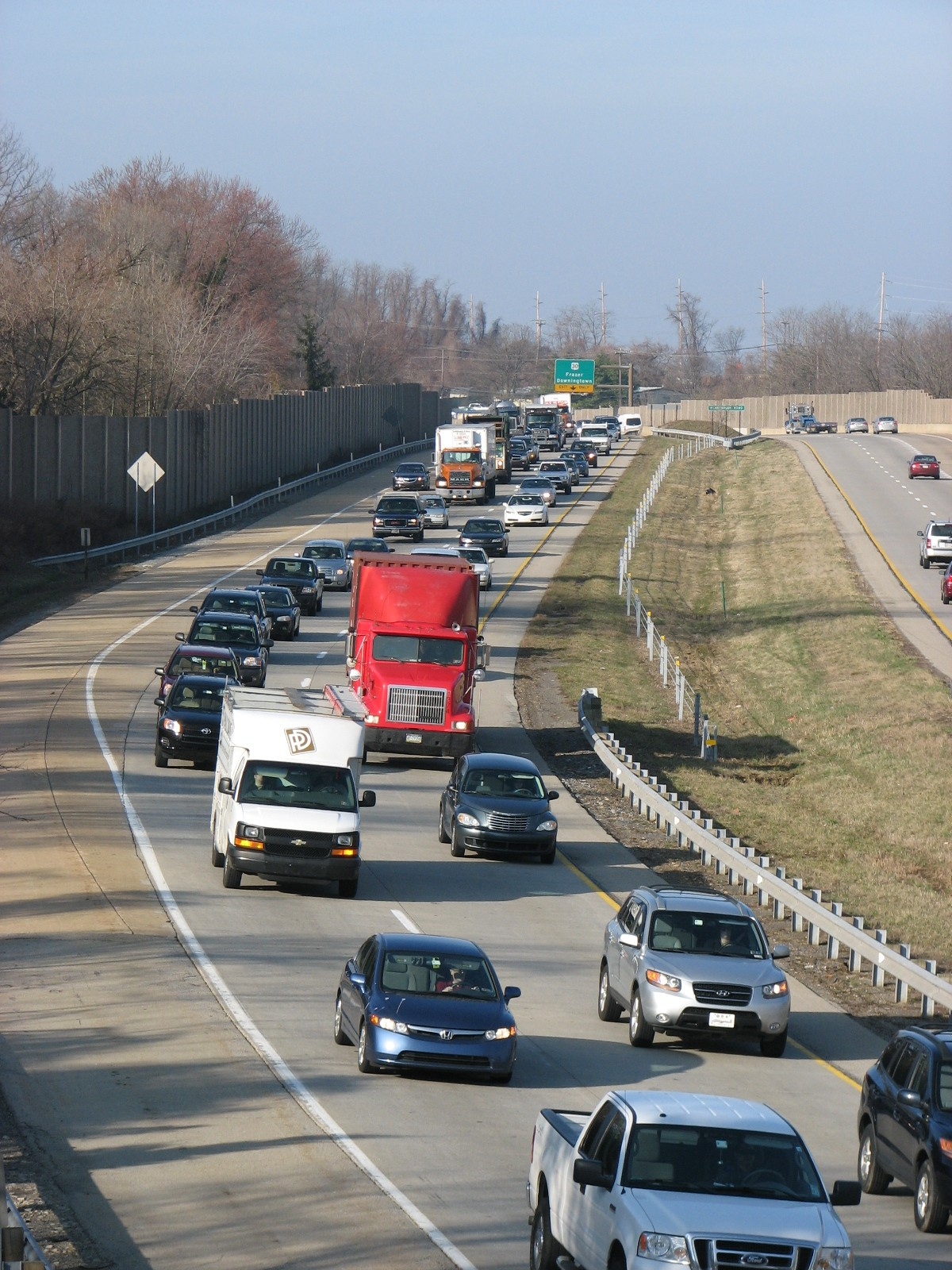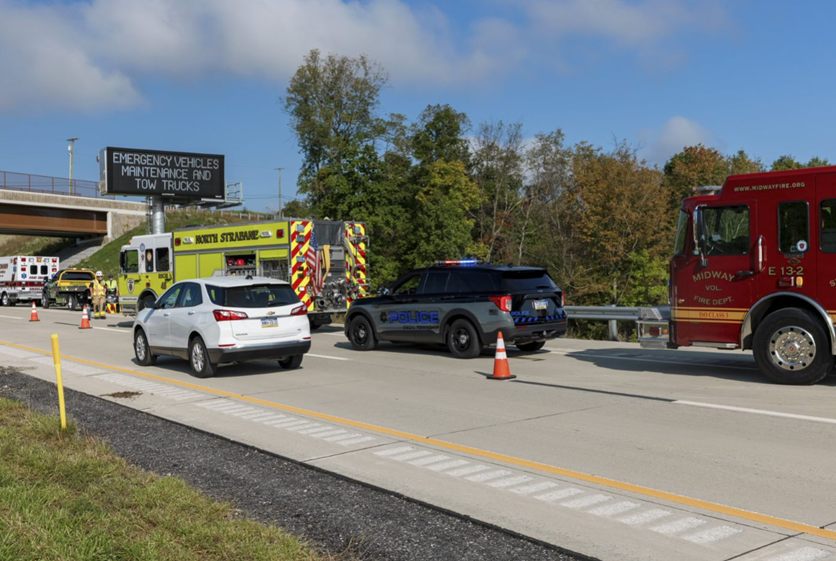PennDOT is building on its commitment to ease traffic congestion through two initiatives:
Crowdsourcing for Advancing Operations and
Next Generation Traffic Incident Management (TIM): Integrating Technology, Data and Training.
Both are Federal Highway Administration's
Every Day Counts Round 6 (EDC-6) innovations that Pennsylvania is championing through its
State Transportation Innovation Council.
Ryan McNary, manager of Traffic Systems and the Transportation Systems Management and Operations (TSMO) Performance, and Dan Farley, director of PennDOT's Bureau of Operations, have played groundbreaking roles in implementing these innovations. 
McNary noted that over the last four to five years, he worked with a development team within PennDOT that produced software that pulls in crowd sourced incident data from Waze and Inrix, two worldwide speed and incident data providers.
The technology pulls together the speeds and incidents from a subset of vehicles on a given segment of road to provide real-time information, which enables PennDOT to create travel time messaging and increase roadway situational awareness.
"Many areas were relying on emergency responders calling us (with incident reports)," McNary said. "So, we wanted to utilize our data sources better."
One challenge PennDOT currently faces is that its five Traffic Managements Centers are not integrated with 911 systems across the state and thus don't have direct access to roadway incident details.
"Our goal is to make (traffic) operations better, and we need to fill the void of not having incidents integrated easily for our operators," McNary said.
With the new Traffic Alerts system, the TMCs can better monitor INRIX and Waze incidents on individual routes around the state. Operators can click on items in the incident list and see details of the length of the congestion and can zoom in on maps and cameras for a better picture of what is occurring. That information can then be quickly posted for queue protection, detouring, and displayed on the public-facing 511PA system. 
"One future effort we are working with the Pennsylvania Emergency Management Agency (PEMA), the Pennsylvania State Police (PSP), and the 911 centers is to potentially get computer-aided dispatch traffic information into the TMCs," he added. "This would help with our timeliness of responding to incidents, diverting traffic or alert travelers sooner."
Beginning in July 2021, McNary's and Farley's team piloted a system that automatically relays data to post "congestion X miles ahead" on roadside electronic signs. That advanced information helps minimize the risk of crashes in congestion where traffic suddenly stops.
Farley also noted that another innovation added to the 511PA system now allows for a call-in audio traffic report to drivers alerting them to roadway impacts in their areas of interest.
Also, "If you are routing through the 511PA App, the system will speak to you and tell you about all known slowdowns ahead from all PennDOT and external partner sources," Farley said.
The Next Generation TIM innovation is aimed at incorporating training, data and technology to help PennDOT, law enforcement and local agencies reduce secondary crashes and incident clearance times.
McNary said his objective was to put reliable data behind the incident timeline.
"Operations staff records incidents on the road, but we correlate it with the crash information and Waze incident to get a more complete picture," he said. "We then take the incident information and overlay it where we have the INRIX speed data to understand how long the incident lasted and how it was affecting the traffic conditions. This allowed us to develop a data-driven 'incident influence time' measure of when traffic returns to historically normal speeds (for that time of day)."
It's a matter of understanding how the incident influences traffic and road conditions over time.
"When an incident is cleared, the thought many times was the traffic management job is done," McNary observed. "But what we are trying to adjust culturally, is that our job isn't done until those queues are gone, and traffic is flowing as normal again. The residual congestion cause safety concerns, and hundreds of secondary incidents each year." 
This initiative "helped us identify where there are opportunities to collaborate with partners to reduce the timeline," McNary said.
Training is an important part of the Next Generation TIM, Farley noted.
"We are a national leader when developing innovative ways to deliver traffic incident training to emergency management professionals," he said.
Online courses were developed with the help of the Pennsylvania Turnpike Commission.
"We are looked to nationally when it comes to providing online training and flexibility on when training can be provided," Farley said. "After hours, weekends or nights demonstrate our commitment and collaboration."
PennDOT also recently agreed to obtain a video sharing software with Maryland called MView. The software allows public agencies around the state to view our live camera feeds in a video wall format. Additionally, several states surrounding Pennsylvania share their cameras to view bordering traffic concerns. In Maryland, over 200 public agencies share their cameras with one another to build a more comprehensive network while sharing resources.
"We're in the process of building our network of partners to share video with, and we continue outreach to 911 Centers and PSP Dispatch," McNary said.